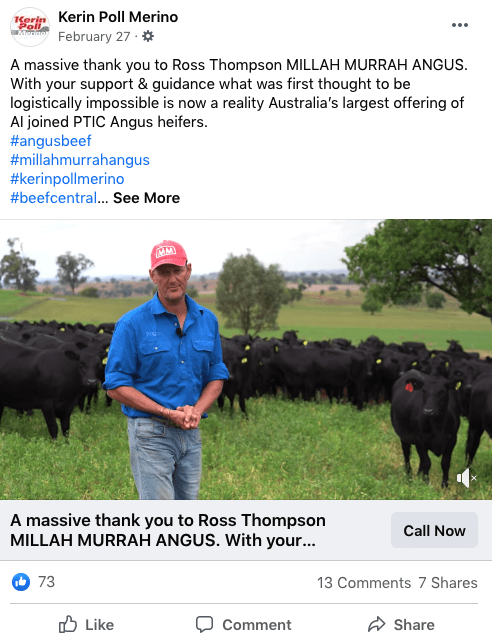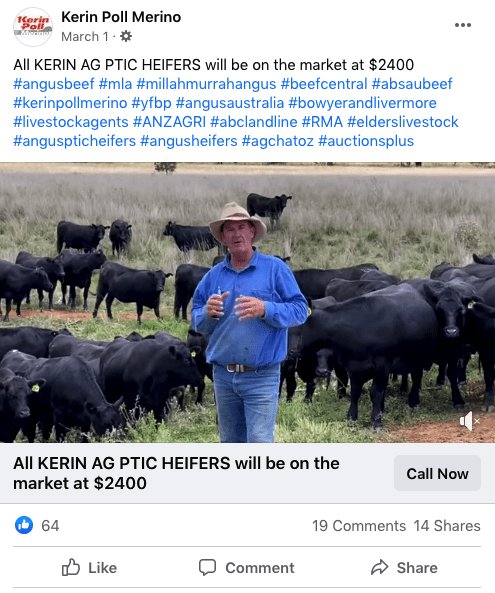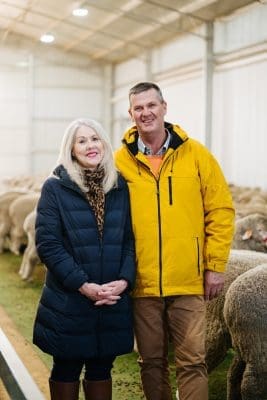
Kate and Nigel Kerin
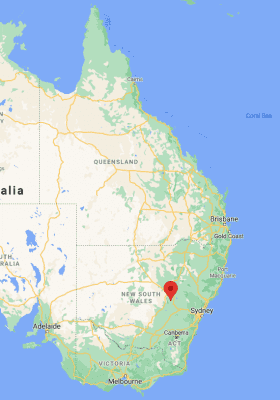
Yeoval, NSW
WHO: Nigel and Kate Kerin
WHERE: Yeoval, Central West NSW
WHY: Increasingly variable rainfall since 1990 prompts change in approach approach to grazing management
HOW: Introducing a smaller, higher value stud Merino flock and livestock trading with grazing charts and grass budgeting to fully capitalise on good years and minimise losses in bad years
WHAT: Result has been a highly-profitable and expanding family grazing business now able to bounce back rapidly from drought.
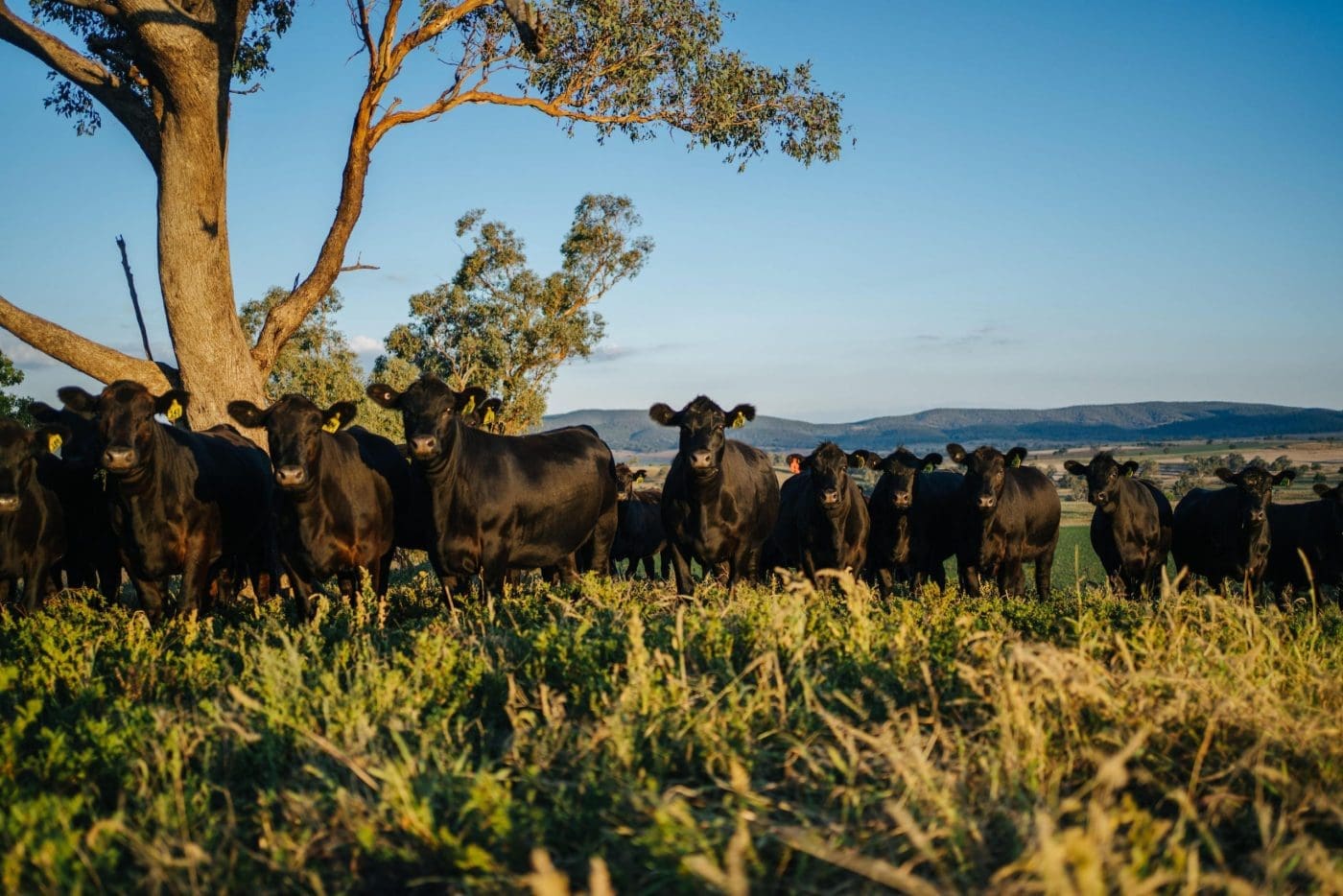
Some of the Angus heifers the Kerins purchased and sold in early 2021 as part of significant cattle trade which helped their business to quickly recover after two and a half year drought.
THE story behind a single $6.2 million cattle trade involving 2508 Angus heifers completed earlier this year helps to illustrate why Nigel and Kate Kerin changed their grazing strategy just over a decade ago.
These days the Kerins and their family can trade as many as 6000 cattle in a single year, but despite growing to that scale they are still perhaps best known as stud Merino breeders.
Their Kerin Poll Merino stud at Yeoval was founded just over 10 years ago and has grown in that short time into one of the leading Merino studs in the country, demonstrated by the national records set at its 2020 ram sale for number of rams sold at auction (500), sale gross ($1.5m) and sale average ($3096).
The major catalysts for change in the Kerin’s family grazing business were three things in particular: clear evidence from long-time rainfall records that their climate has become far more variable since the early 1990s; going out on their own after a family succession process in 2007; and their use of outside expertise and advice including an independent business coach, respected and successful industry mentors, personal development programs and practical training such as KLR Marketing courses.
In simple terms the biggest change they have made is to put grass at the centre of every decision they make.
Mr Kerin, who grew up on his family’s sheep property at Yeoval and left school after completing year nine to go jackarooing, said it became clear that the best way of selling the grass they were growing was to put it through high value animals, so they decided to convert their generations of commercial Merino breeding experience into their own Merino stud.
With that decision also came a bold commitment to not only do it well, but to become Australia’s number one Merino Stud within 10 years.
The “how” involved actively harnessing the best genetics, data and technology available, including full genomic profiling, DNA testing, ASBVs (Australian Sheep Breeding Values), and blanket AI programs across their stud ewes using rams with the best data they could find.
Commercial Merino producers responded positively to what they were doing and in just its sixth year, Kerin Poll Merino’s annual ram sale became the highest grossing Merino ram sale in the country, a mark the stud has maintained each year since.
Cattle and sheep trading becomes tool for managing climate
The core focus of the business is the Kerin Poll Merino flock, but over the past 10 years the Kerins have also introduced strategic trading of cattle and sheep, in conjunction with grazing charts and grass budgets, to take advantage of surplus feed when it is available.
All purchased trade stock must be “in and out” within four months, backed by the reasoning that everyone can see how much grass is ahead of them for the next four months. Any trade the Kerins make, be it cattle or sheep, will only be made if there is sufficient feed to finish that trade before the stock are bought.
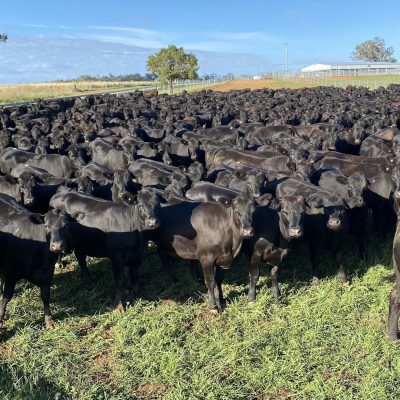 Usually trade stock are only bought in when they have already been forward sold at the end of the trade.
Usually trade stock are only bought in when they have already been forward sold at the end of the trade.
The Kerin family’s long-time rainfall records show that increasing climate variability has been occurring since about 1990.
“All I know is my climate has changed,” Mr Kerin said.
“A lot of what we do now as a business is based around fitting in with climate change.”
The increased variability their rainfall records show is not just in the form of more drier years, but importantly, more wetter years as well.
In their 650mm annual rainfall area, the Bureau of Meteorology categorises 900-1000mm of rain in a single year as a “one-in-50 year event”.
However, these “one-in-50-year events” have happened three times in the past 10 years on their family property at Yeoval.
The Kerins use livestock trading to quickly and fully capitalise on the feed produced by these events.
The core of their business, the Kerin Poll Merino stud, covers its own direct costs and pays for the overheads of the whole business, while the cash that comes into the business comes in from trading.
And the big years are worth capitalising on.
“These so called one-in-50-year events, which are now three-in-10, can produce two or three years of revenue in one,” Mr Kerin said.
“There is so much opportunity out there if you’re not locked into the traditional paradigms of grazing.”
A big trade
The story of a massive trade Mr Kerin completed over the summer months of 2020/21 helps to illustrate what can be achieved.
When good rain began falling late last year, and knowing that PTIC heifers would be in high demand across Eastern Australia as producers sought to rebuild drought-depleted herds, Mr Kerin instructed his agent Todd Clements from Bowyer and Livermore, Bathurst, to buy 500 Angus heifers from highly regarded bloodlines such as Booramooka, Millah Murrah, Pine Creek, Rennylea and Te Mania.
It kept raining, so he kept buying, soon assembling over 2508 Angus heifers over a series of weeks.
The purchase price kept rising from week to week, to a point some would argue they were surely too expensive to have any chance of making a positive return.
But Mr Kerin said his focus remained firmly on the average purchase price of all heifers across the entire mob he was assembling, rather than on each individual group.
When spread out from start to finish, the average price of all 2508 heifers he purchased still represented attractive buying in a rising market, according to his budgeting calculations.
Creating a point of difference
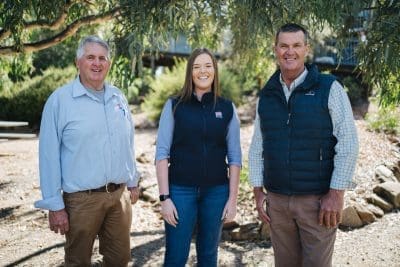
Bill Cornell and Annie Pumpa from ABS Austrralia, the breeding services company which oversaw the massive AI program, with Nigel Kerin (right). ABS has also produced an article on its work with Kerin Ag which can be viewed on its website here.
The next step was to create a point of difference to make his 2508 heifers stand out in the marketplace from all other Angus heifers being offered at the same time.
He chose to undertake a massive program to artificially inseminate the heifers to two leading sires, Millah Murrah Paratrooper, the $160,000 Australian record priced Angus bull, and Millah Murrah Nugget, the $54,000 all breeds Australian record priced yearling bull.
This is likely to be up there with the single biggest AI programs ever carried out in Australia.
The huge undertaking was also made possible thanks to a set of fully autonomous cattle yards Mr Kerin spent 15 months designing before they were constructed by Proway on his property in 2015.
All crush functions and gates in the yards are air-operated and remote controlled from a safe place out of the flight zone, with bud boxes also used to facilitate the smooth flow of cattle in and out.
“You’d never think of doing it unless you had a set of yards like this,” Mr Kerin said.
“We were drafting 600 heifers in 35 minutes and it was dead quiet, no noise, low stress, so easy. Technology made everything easy.”
Telling the story
The heifers were listed for sale on AuctionsPlus on Friday, March 5, 2021.
Mr Kerin is a well-known user of social media in Australian agriculture and actively used his Facebook account to help in the marketing of the heifers.
“What we did was told the story from the day those heifers got here until the day they left,” he said.
That entailed posting regular updates and videos drawing attention to the upcoming sale including this ‘guest post’ from Millah Murrah principal Ross Thomson:
(Click on image to view post on Facebook)
Mr Kerin used another post (below) to assure potential buyers that the heifers would be “on the market” once bidding reached a price of $2400 per head, to give them the confidence to know the cattle would be “buyable” and worth chasing.
Broken down, that ‘reserve’ price of $2400 per head reflected his buy price, plus the cost of carry, plus a levy the Kerins attach to all trade stock in their business of $10 per month per DSE equivalent, which equates to a return of $120 per DSE, annualised.
“Once I get that I am happy because that is a massive return,” he explained.
(Click on image to view post on Facebook)
The entire trade grossed $6.2 million. This included the sale of the PTIC heifers, a small number of classed out heifers, while all preg-tested empty heifers were forward sold to a supermarket buyer.
The trade achieved a 47 percent return on investment.
‘Climate variability driving our profitability’
The increased profitability created since changing their approach to grazing management has effectively enabled the family to continue expanding their business by adding another property to their operation every three years or so over the past decade.
“Climate variability is driving the profitability of our farming business because we have learnt that if we go into containment feeding early with the stud, and leave our landscape intact, we’re back into the market buying animals back in while most producers are still feeding.
“If you can have a paradigm shift of capitalising on those big years, these one-in-50 year events which are now three-in-10, using grazing charts and following the trend line you can keep pouring the animals on whilst that rain keeps coming.
“The guts of our busines, the engine of our business, is the ability to grow grass.”
Rapid ‘bounce back’ from drought
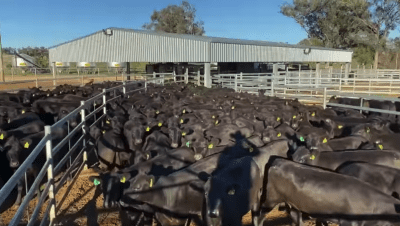 In December last year Mr Kerin had a number of social media interactions with several croppers west of the Newell Highway who had either just finished, or were finishing, a bumper harvest, one which had effectively put them financially back to where they were at the beginning of a three year drought.
In December last year Mr Kerin had a number of social media interactions with several croppers west of the Newell Highway who had either just finished, or were finishing, a bumper harvest, one which had effectively put them financially back to where they were at the beginning of a three year drought.
“Is it possible for a livestock producer to do the same thing?” was their question to Nigel.
He responded “buggered if I know”, but said he would be able to answer the question in March
He responded at the time “buggered if I know”, but said he would be able to answer the question in March, once his large Angus heifer trade had been completed.
“The answer to the question is, yes, yes we can,” he told Beef Central this week.
“The end result of this trade was that it financially got us back to where we started at the beginning of a two and a half year drought, and that is exactly what it did.”
Emotion often over-rules economics
As he drives around Central West NSW Mr Kerin says he sees a lot of “moribund, cellulose grass” still standing where the drought broke 12 months ago, but where the grass grew and no one harvested it because they had no animals and told themselves stock were too dear to buy.
Emotion often tended to over-rule economics, he said.
He offered the example of a restocker buying an Angus steer.
A restocker who is used to buying Angus steers at $1000 may well baulk at paying $2000 for the same animal.
But when emotion is removed from the equation, the only real difference between the two, across a four month trade, is the interest bill, Mr Kerin said.
All other costs, regardless of whether the steer was bought for $1000 or $2000, are still the same for that animal in terms of freight and cost of carry.
Commission will change slightly, but the main one is the interest bill, which, in perspective, is still very minor:
“The interest bill on a $1000 steer for four months is $13.33, the interest bill on a $2000 steer is $26.66,” he said.
“That is the only difference. We’re going to have an argument about $13?
“At the moment that is less than two days weight gain.
“I am not saying take the risk and buy dear cattle, I am saying get a forward price on them into the feedlot first, you have got to cover the risk.
“But what I see in Central West NSW is 60 percent of that feed that grew after the rain was never utilised, and that was another hand break on the bounce back of a lot of families.”
A problem shared is a problem solved
The drought took a massive toll on many farming families, Mr Kerin said, leaving many very emotionally battered and bruised, and clouding their ability to make decisions once the season did break.
He said this was where the value of having good mentors was incredibly important.
“One of the things really lacking in Australian agriculture is sharing of problems,” he said.
“A problem shared is a problem solved.
“A big thing we have done is use respected mentors to help us make decisions, because no one is as smart as all of us.
“Whenever we have a major decision to make we share it with our mentors.
“Bringing in mentors can really help all of us in family businesses to remove the emotion out of decision making and to put things into perspective.”

